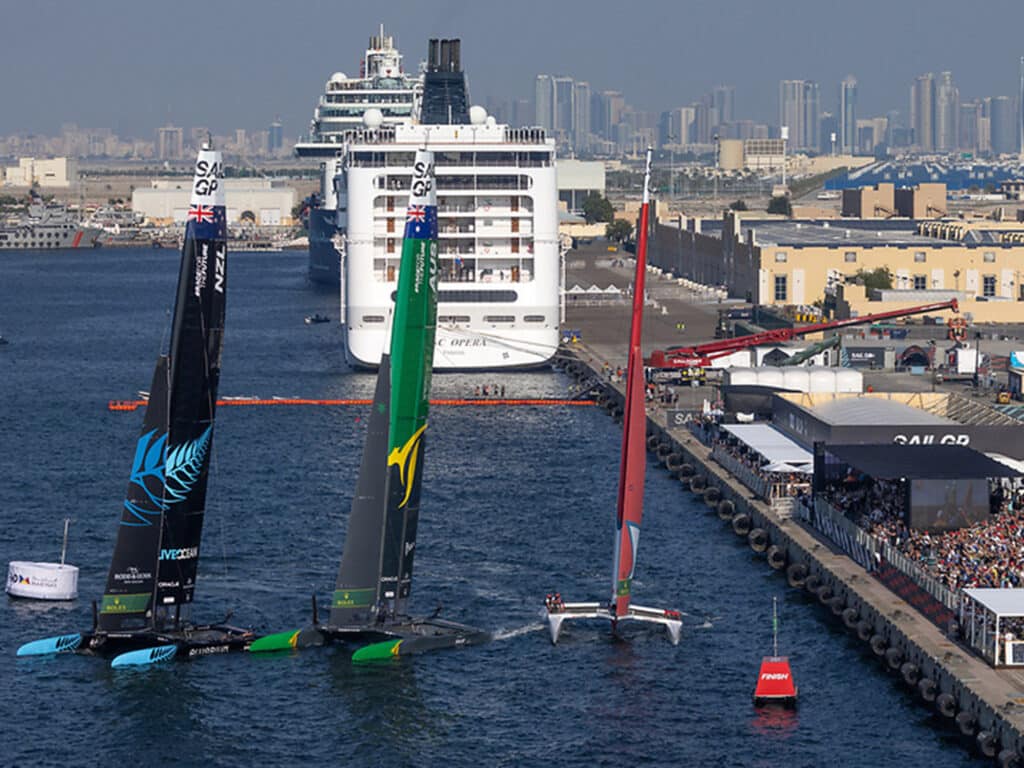
As the white bows of Canada SailGP Team’s F50 catamaran struck the finish line of the Emirates Dubai Sail Grand Prix’s three-boat finale, the crew celebrated its chaotic race win with fist bumps and high fives. But mere seconds earlier, the umpires onshore had dinged the Canadians with a mark-room penalty while rounding the final leeward gate. The celebration was short lived and the regatta win went the way of New Zealand’s SailGP Team, which had snatched the lead in the final seconds with a precision hand-brake turn around the mark.
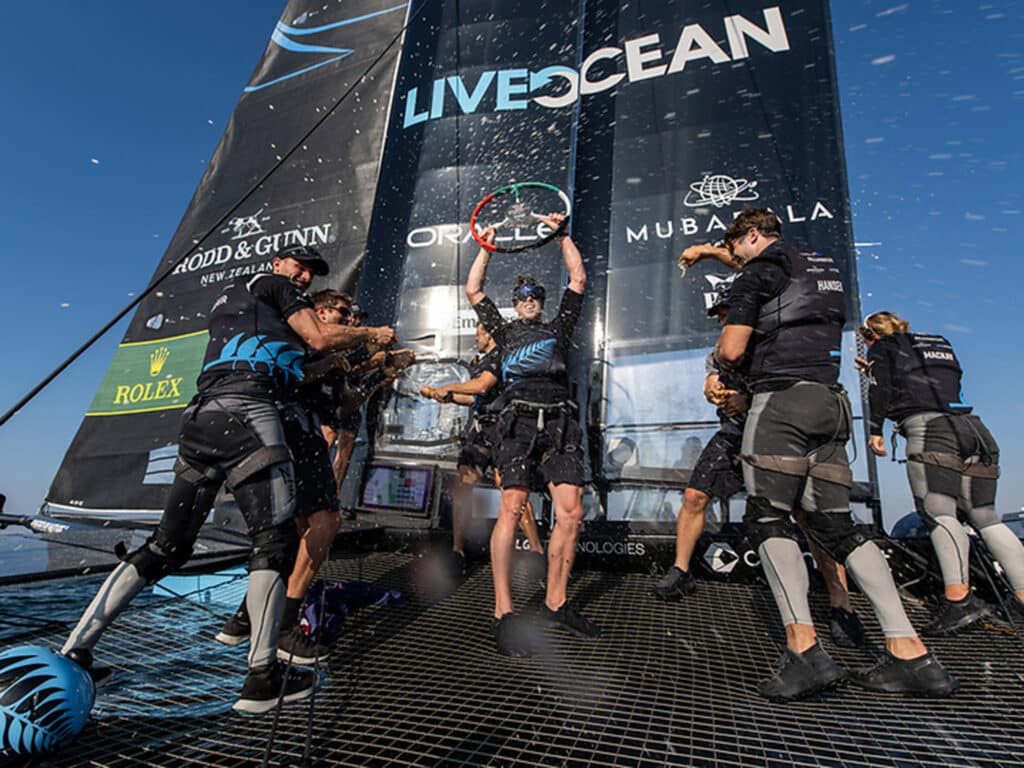
In slow-motion, with the New Zealanders on the inside, the Australian’s jammed in the middle and the Canadians on the outside, the three boats crept toward the line having rounded the mark in a pinwheel. The ensuing final leg into the finish—squeezed against a seawall and no longer than three-boatlengths—was far too short for the Canadians to clear their penalty and make a move.
It was a captivating end to an unpredictable regatta that highlighted the knock-on effects of key crew and personnel swaps following the sale and re-launch of an all-new lineup for the US team. As a result of longtime skipper and and CEO Jimmy Spithill selling the franchise to its new CEO, Mike Buckley, and a team of celebrity and tech investors, Spithill was free to slide into the Australian boat’s driver’s seat for one last hurrah. Spithill’s experienced wing trimmer, Paul Campbell-James, as well as his coach Philippe Presti, were picked up by the Canadian team. Those swaps were seamless and fruitful for skipper Phil Robertson as the Canadians were in fine form throughout the regatta. If not for the seemingly unavoidable and fatal mark penalty, the Dubai event could easily have gone the way of the Canucks, but Robertson chuckled it off as one that didn’t quite go to plan.
Spithill slotting into the Australia SailGP driver’s seat was seamless as well and while his acumen at the helm of an F50 is undeniable, it’s also true he walked on to a supremely talented sailing team that is on Season 4 roll. Once he got his mojo going, he almost delivered a storybook ending to his SailGP career, but he was content to bow out of the arena having preserved the Australian team’s place atop the overall standings.
“I gave myself a goal coming into the team to get a consistent result, not get penalty boats or damage the boat, so from that point of view I’m really satisfied but of course I would have loved to have gotten them a win here in Dubai,” Spithill said. “It’s been one hell of a ride and I’m going to miss the battles and the competition.”
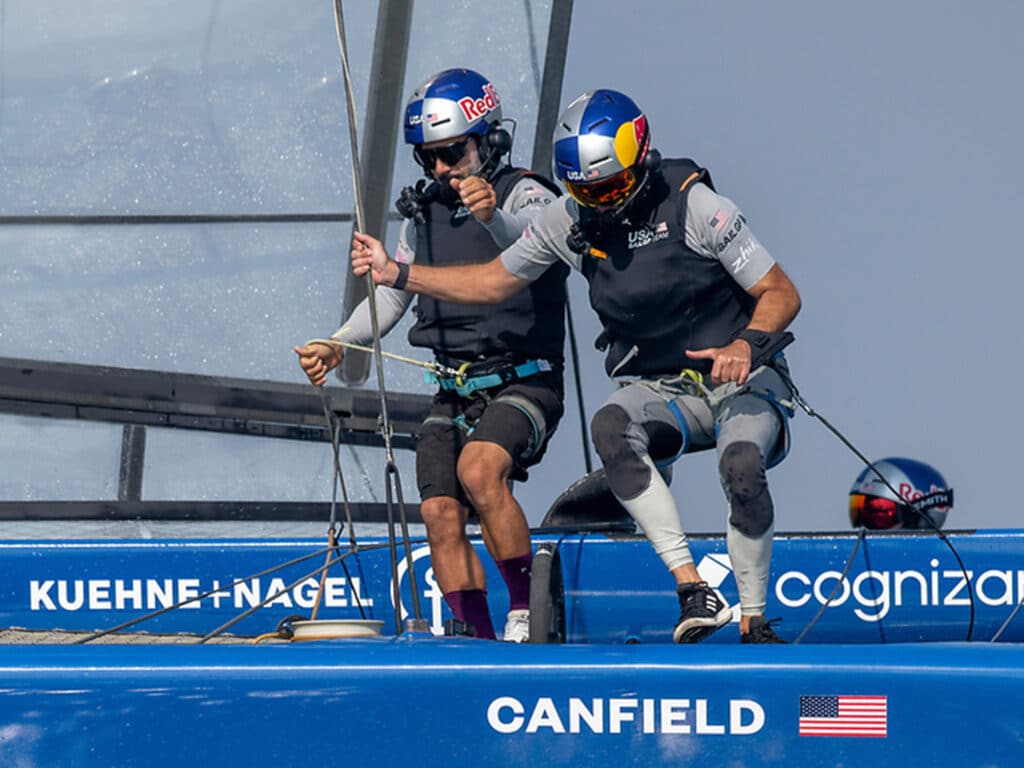
The league rookies of the US team were under no illusions of reaching the finale in their first event, but with limited simulator sessions and four days of training on the F50, they showed moments of potential, which was impressive given the many challenges every new team faces on and off the water: the distracting circus of hospitality, sponsor and media commitments, let alone coming to grips with the complex boat. Alternating between the five-up and four-up crew configuration and understanding the complexities of two different wing sizes presented additional layers of complexity for the first timers, but in difficult conditions they had decent starts by employing a different sort of strategy (early setup versus the long slingshot approach). But in marginal and punishing foiling conditions they struggled with maneuvers and moding and it didn’t take long before they were off screen and getting lapped on the short courses.
“It’s a work in progress for sure,” Canfield said in the media mixed zone on the final day. “To get to where we got to in a matter of four days is pretty cool to see how the team has pushed hard to get to this level.”
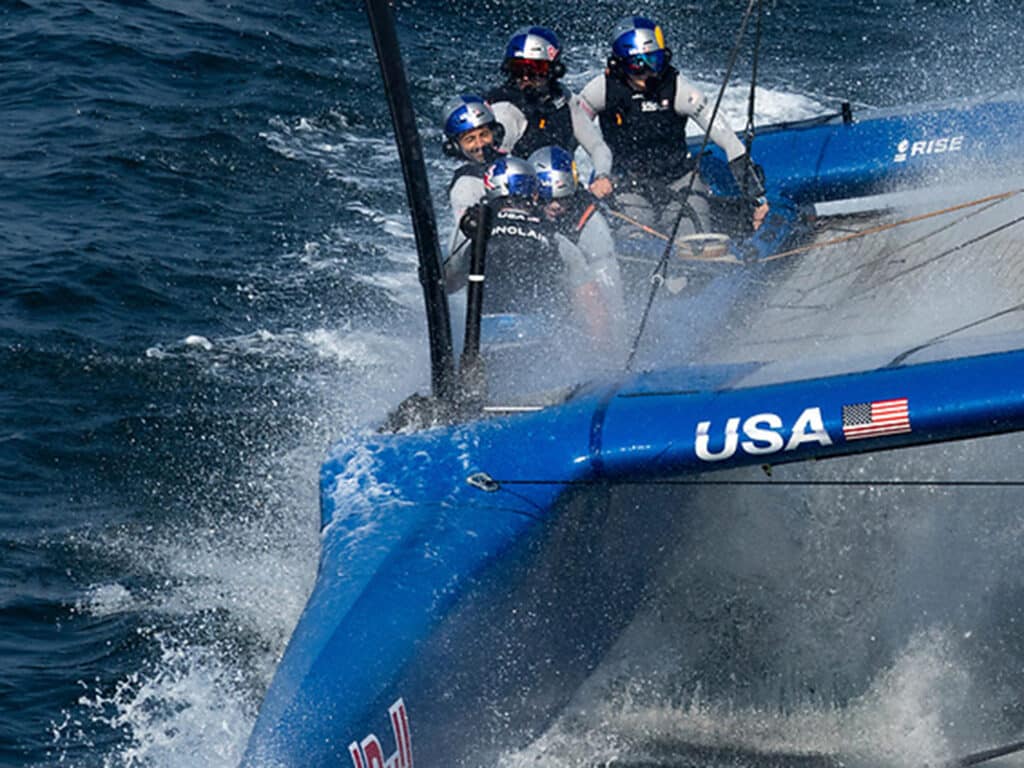
For the US team, Dubai is the first bench mark of their season and they now have a foundation to build upon with a realistic take of their strengths and weaknesses and the areas to improve ahead of the next event in Abu Dhabi in mid-January. If there’s one takeaway for hopeful fans of the US team, it’s worth noting that Canfield showed some serious new-guy gumption when his competitive instincts led him to shut the door hard on Emirates Team GBR’s Ben Ainslie in the final fleet race start of the series. The Brits were on a roll and were eager to reach the Finale in what was an important event with their Emirates sponsorship.
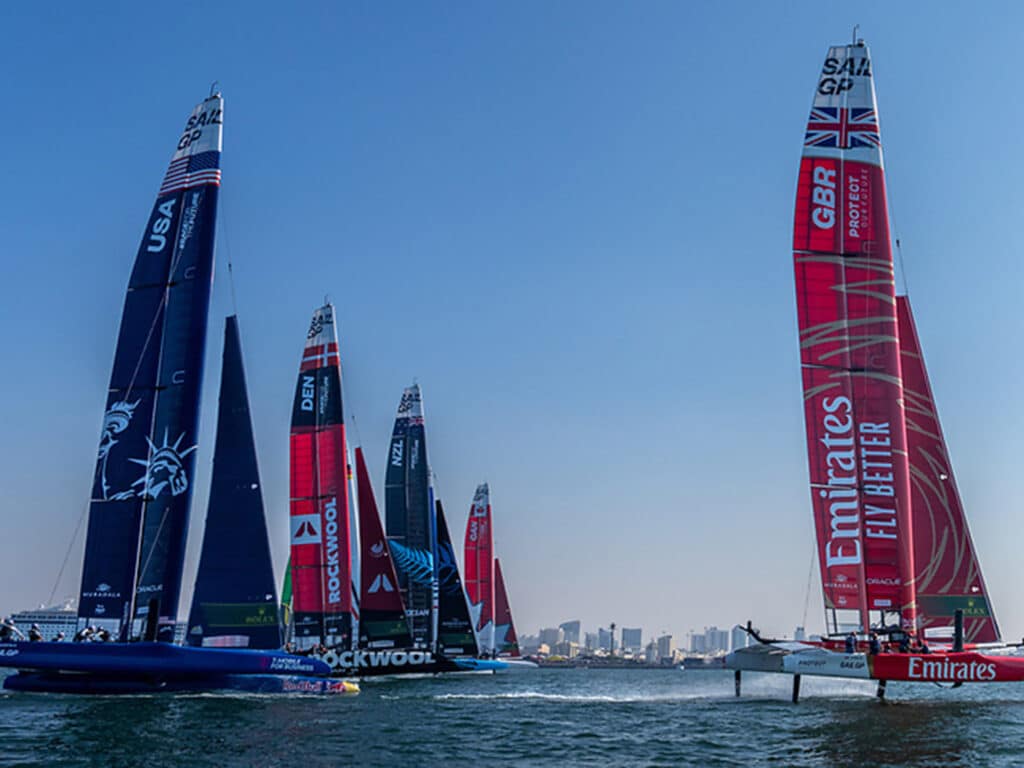
With a high-speed slingshot approach to the starboard end of the line, it appeared the Brits were about to cream the fleet with a perfect start, but Canfield denied them entry, pressed the protest button and gave the Brits a disqualification that denied them a place in the finale.
Ainslie, who has had his share of verbal exchanges with SailGP’s chief umpire, Craig Mitchell, kept his composure in the moment but later opined that the call was marginal.
“We were in pole position and it was really 50-50 with the USA,” Ainslie said. “They were obviously gunning to try and shut us out and eventually the umpires decided that was the case…But that’s sport. Sometimes it’s going to go against you and you just have to take it on the chin.”
“Unfortunate positioning for Ben,” Canfield said, “but that’s how it goes. We’re here to race.”
That said, the state of US and UK relations may not be as cordial as they were once were on the SailGP racecourse when these two teams meet again Abu Dhabi. Ainslie is as ruthless and vengeful as he is talented.









